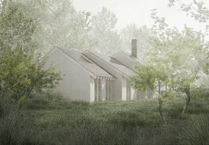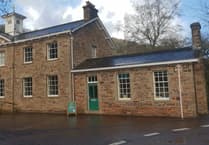ONE of the UK’s rarest species of butterfly has been spotted at a new location on Exmoor.
The heath fritillary butterflies were seen on Exmoor National Park Authority (ENPA) land at Ashton Cleave, about five miles west of Hawkcombe Woods.
ENPA has been engaged in a long-term project to restore oak coppice in Hawkcombe Wood National Nature Reserve, near Porlock, to help the recovery of the nationally rare butterfly.
The species is also traditionally known as the ‘woodman’s follower’ because of its habit of occupying recently coppiced areas.
It has been known to breed successfully in Hawkcombe for several years.
The first butterfly this year was spotted by a holidaymaker in the area, who sent their findings to Butterly Conservation, which works in partnership with ENPA.
ENPA senior woodland officer Graeme McVittie said: “Working with Butterfly Conservation has led to some exciting work in our woodlands that will increase biodiversity and benefit rare species like the heath fritillary.
“Now is peak flight time for the heath fritillary, and it is a sign that the mass emergence and dispersal of these butterflies last year resulted in a successful breeding population beyond their established core in Hawkcombe.
“This bodes well for potential colonisation of other Exmoor National Park habitat historically occupied by this type of butterfly.”
The sightings follow a report of the species last year in Heddon Valley, mid-way between Lynton and Combe Martin, which was probably the first seen in North Devon for at least a couple of decades.
ENPA is encouraging people to be involved with Butterfly Conservation’s annual ‘Big Butterfly Count’ which runs from Friday, July 12, to Sunday, August 4
Free butterfly identification guides are available in each of the National Park Centres in Dulverton, Dunster, and Lynmouth to help people become ‘citizen scientists’.
People can help to record rare and interesting species of wildlife such as the heath fritillary.
The ‘Big Butterfly Count’ is a nationwide citizen science survey aimed at helping assess the health of the environment.
It was launched in 2010 and has become the world'’s biggest survey of butterflies with more than 64,000 ‘citizen scientists’ taking part in 2022 and submitting 96,257 counts of butterflies and day-flying moths across the UK.
Butterflies are counted because they are vital parts of the ecosystem as both pollinators and components of the food chain.
However, they are under threat and numbers of butterflies and moths in the UK have decreased significantly since the 1970s.
Butterfly declines are also an early warning for other wildlife losses and are key biodiversity indicators for scientists as they react quickly to changes in their environment.
A Butterfly Conservation spokesperson said: “Counting butterflies can be described as taking the pulse of nature.
“Therefore, if their numbers are falling, then nature is in trouble.
“So, tracking numbers of butterflies is crucial in the fight to conserve our natural world.
“That is why taking part in this massive ‘citizen science’ enterprise is of great importance not just for our butterflies but for the wider environment and biodiversity in general.”




